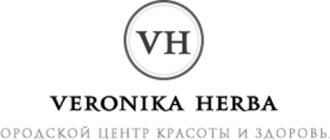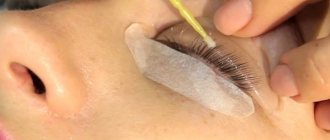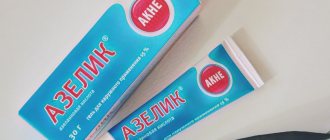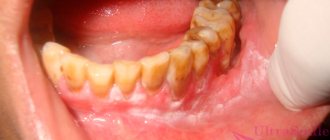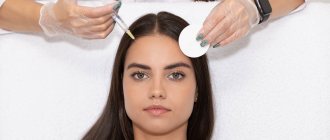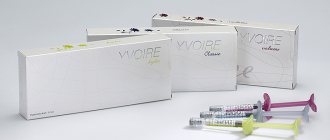The skin of the face is one of the most unprotected areas of the human body, exposed to many external factors 24 hours a day. The use of modern cosmetology products makes it possible to reduce the level of this impact, but it is simply impossible to completely eliminate it. High levels of air pollution, temperature changes, bright sunlight, wind, dust - the list goes on for a very long time. On top of that, the skin experiences natural age-related changes, which are even more difficult to resist. In combination with the stress that regularly occurs in residents of large cities who are active, a negative result does not take long to arrive. The 21st century has given women many progressive methods that, with little effort, can effectively and safely improve the condition of their skin and prolong its youth for a long time. Two methods of cosmetic therapy have recently gained deserved popularity - bioreparation and biorevitalization. Let's look at the features of each method.
How do injectable fillers work?
- Restore lost tissue volumes.
- Reduce wrinkles around the mouth.
- Add volume to lips.
- Enlarges cheekbones and tightens cheeks.
- Rejuvenate the area under the eyes and reduce dark circles.
- Eliminate age-related loss of arm volume.
- Correction of the genital area in women and men.
There are two main types of fillers - hyaluronic acid preparations and collagen stimulators. All of them are perfectly accepted by the body, adjusting volumes and having a rejuvenating effect.
Biorevitalization prices
| Service code | Area of influence / List of procedures / Drug | Price |
| А11.01.012 | JALUPRO | 7000 |
| A11.01.013 | VISCODERM 0.8% | 8500 |
| A11.01.013 | VISCODERM 2.0% | 9500 |
| А11.01.012 | AQUASHINE | 15000 |
| A11.01.013 | MESO-WHARTON P199 | 18500 |
*
— the price is indicated in rubles
Hyaluronic acid fillers
These fillers contain hyaluronic acid, a naturally occurring carbohydrate compound found in the skin and joints. It attracts and retains water, the amount of which is many times greater than its own weight, so preparations of this type are considered excellent moisturizers.
The introduction of hyaluronic acid increases the production of collagen and elastin proteins. All these three substances work in tandem, forming a kind of basis for the skin, so an increase in their content causes tissue rejuvenation.
Hyaluronic acid, due to its natural composition, is perfectly accepted by the body and practically does not cause intolerance or allergic reactions. In the body, it gradually decomposes into water and carbon dioxide.
Hyaluronic acid
There are several options for fillers based on hyaluronic acid, which are successfully used in Russian and foreign clinics. They are used to increase the volume of the lips, cheekbones, fill wrinkles and even for intimate plastic surgery. With their help, you can enlarge the labia minora and majora.
What's better
Each procedure has its own characteristics, so what is better - fillers or biorevitalization - is decided by the cosmetologist depending on the condition of the patient’s skin.
Is it possible to combine both methods - in some situations this is possible. When it is necessary to carry out biorevitalization after fillers or vice versa, the cosmetologist finds out in each individual case. As a rule, the doctor maintains the following sequence of work:
- Improves skin condition using biorevitalizing procedures. After all, if the skin is deficient in collagen and elastin, the filler may be poorly distributed in the dermal layers. Therefore, first, healing and stimulation of cell renewal are carried out, then contour plastic surgery.
- Injects fillers 2–4 weeks after biorevitalization.
Is it possible to use both methods on the same day? Theoretically, yes. There will be no harm from such manipulations, but there is a risk of reducing the life of the filler. After all, the biorevitalizer provokes a desire for the active “antidote” hyaluronidase introduced during contouring. This enzyme breaks down hyaluronic acid molecules and quickly removes them from the body. Therefore, combination can reduce the entire result of contouring to zero.
Collagen stimulants
Collagen stimulators based on poly-L-lactic acid and calcium hydroxyapatite stimulate the production of collagen protein, which is part of the “framework” of tissues, so when such fillers are introduced, rejuvenation occurs as naturally as possible.
Compared to hyaluronic acid, the introduction of collagen stimulators gives a longer lasting effect. This option is great for patients concerned about loss of facial volume and deep wrinkles that appear around the nose, mouth and chin. This type of filler is also used for hand rejuvenation.
Biorevitalization and mesotherapy in questions and answers
Biorevitalization and mesotherapy in Gomel is available in our medical clinic. You can see the price for these services here, and in this article we decided to tell you in more detail about what these procedures are and who will benefit from them.
After sun exposure, the problem of dehydration and dry skin comes to the fore. UV rays have a negative effect on skin cells - fibroblasts, which are responsible for the production of hyaluronic acid and collagen. Hyaluronic acid is a natural skin moisturizer, and after active tanning its amount noticeably decreases. In the summer, a large number of patients go to the medical center to see a cosmetologist in order to moisturize the skin and restore its radiance. To improve skin turgor and color, biorevitalization and mesotherapy are recommended. Before the procedure, an examination and consultation are required, during which the cosmetologist recommends the necessary drug and answers the patient’s questions. Below are the most pressing questions. What is the difference between biorevitalization and mesotherapy?
Facial mesotherapy and biorevitalization are methods for correcting aesthetic skin imperfections using the injection of hyaluronic acid.
The difference lies in the use of hyaluronic acid preparations of varying concentrations and molecular weights. For biorevitalization, preparations with a concentration of hyaluronic acid are used, usually from 1 to 3%. Papules after the procedure stay on the skin longer, the interval between procedures is usually 2 weeks, and the number of procedures is less. In mesotherapy preparations, the concentration of hyaluronic acid does not exceed 1%, therefore, to achieve an aesthetic result, a larger number of procedures are necessary with an interval of 1 week. The course of mesotherapy procedures is designed for 6-8 sessions, and the course of biorevitalization is on average 3-4 procedures. At what age can biorevitalization and mesotherapy procedures be performed?
The procedure is performed only if there are indications for it.
Considering the fact that the production of one’s own hyaluronic acid begins to decline from the age of 28 and the first signs of skin aging appear, biorevitalization is usually carried out after 30 years. But sometimes, to restore skin turgor, biorevitalization and mesotherapy are performed in younger patients. A decrease in skin turgor occurs with excessive use of tanning, sudden weight loss, or after a long illness and prolonged stress. Is it necessary to carry out a course or is one procedure sufficient?
A course of procedures is necessary to change the morphofunctional characteristics of the skin and achieve maximum aesthetic results.
The course is usually 3-4 procedures with an interval of 2 weeks, maintenance - 1 procedure every 3-4 months. One-time procedures are carried out for preventive purposes before traveling to hot countries or after returning from active sun. What complications can occur after biorevitalization and mesotherapy ?
Biorevitalization and mesotherapy are a safe and predictable procedure.
A carefully collected medical history and observance of intervals between procedures can avoid complications. Of the side effects, the most common are microhematomas, which can be avoided by not performing the procedure in the first 3-4 days of the menstrual cycle, while taking aspirin, citramone and other blood thinning drugs. Also, you should not do the procedure if the patient drank alcohol the day before. How long does the effect last after biorevitalization and mesotherapy, and what does it depend on?
The duration of the effect most often depends on the patient’s age and lifestyle.
Concomitant pathologies, uncontrolled tanning, stress, sudden weight loss, frequent air travel and time zone changes reduce the duration of the effect of the course of procedures. Also, the duration of the effect is affected by compliance with the intervals between procedures. If the procedures were irregular and isolated, the effect will quickly fade away. Is it possible to remove nasolabial folds with the help of biorevitalization and mesotherapy?
Nasolabial folds can be removed only with the help of stabilized hyaluronic acid filler. This procedure is called contour plastic surgery.
How long after biorevitalization and mesotherapy can photorejuvenation be done?
Photorejuvenation can be carried out no earlier than 7-14 days after biorevitalization and mesotherapy.
The duration of the intervals between procedures depends on the composition of the drug and the aesthetic condition of the patient’s skin. Is it necessary to perform hyaluronic acid injections with anesthesia?
No, not at all necessary.
It all depends on individual sensitivity and pain threshold. Many patients tolerate the procedure well and do not require pain relief. But, if you are doing the procedure for the first time and are afraid of injections, then it is better to apply anesthesia to the treated areas. Typically, Emla cream is used for anesthesia, which is applied under the film for 20 minutes. Is the procedure carried out in the summer?
Yes, it is carried out.
In summer, UV rays damage skin cells, it becomes dehydrated and loses turgor. In summer it is necessary to use sunscreen. It is not recommended to carry out the procedure earlier than 10 days after returning from active sun, and also to sunbathe in a solarium after the procedure for 7-10 days. Are hyaluronic acid injections performed in the area around the eyes?
Yes, it is carried out. Currently, a cosmetologist’s arsenal includes a large number of drugs developed specifically for the area around the eyes. You can decide on the choice of drug after consultation and examination. Consultation at our medical center is free.
Biorevitalization, mesotherapy and other procedures
Continuing the topic of such current procedures as biorevitalization and mesotherapy, I would like to consider combining them with other cosmetic procedures. Most often, questions arise about the combination with botulinum toxin preparations (Botox, Dysport) and peelings. Let's look at these questions in more detail.
Biorevitalization, mesotherapy and botulinum therapy.
Expression wrinkles can begin to form at an early age, when there are no indications for visiting a beauty salon. They can occur in different skin types, are associated with tension in certain facial muscles and often make young girls think about their correction. At the same time, we can see wrinkles on skin that is not prone to hyperactive facial expressions, often this is a dry and dehydrated skin type, as well as the condition of the skin after active sun exposure - as a result of photoaging. And in this case, the choice of the method of biorevitalization or mesotherapy here will be absolutely justified. In order to adequately assess the condition of your skin and choose the most appropriate correction method, let's define the definitions of these procedures. So, Botulinum therapy is an effective therapy for facial wrinkles, which is based on relaxing the muscle by injecting botulinum toxin (Botox) into it. Biorevitalization and mesotherapy are physiological prevention and correction of skin photoaging. Is it possible to combine these methods? Yes, it's possible. If at the same time there are signs of increased dryness of the stratum corneum of the epidermis, dehydration of the dermis, accompanied by a decrease in elasticity and sagging tissue, combined with expression wrinkles. In the absence of facial wrinkles, it is not advisable to inject botulinum toxin. And, conversely, biorevitalization and mesotherapy in young patients in the absence of signs of skin dehydration, decreased tone and photoaging is also inappropriate. But - IMPORTANT - IT IS NOT ADVISABLE TO COMBINE THESE TWO PROCEDURES AT THE SAME TIME! Why? When botulinum toxin is injected into a muscle, it relaxes, as a result of which the drainage of tissues and skin is disrupted. Consequently, for some time the outflow of blood and lymph from this area will be impaired and there may be slight swelling of the tissues. And biorevitalization and mesotherapy involve the introduction of a hydrophilic, that is, water-attracting, gel material, and this will also increase tissue swelling. Swelling will be especially noticeable in the area around the eyes. Therefore, the main condition for the compatibility of these methods is compliance with the required intervals between procedures. It is preferable to carry out botulinum therapy at the end of the course with biorevitalization and mesotherapy - after 2-3 weeks. A shorter interval between procedures is only permissible if the “mesobotox” technique is chosen, in which the dose of botulinum toxin is much lower and there will be no pronounced relaxation of the facial muscle. After botulinum therapy, biorevitalization and mesotherapy can be done after 3-4 months, when muscle movements are already slightly restored and the risk of edema is much less. What to do if tissue swelling does develop? Limit evening fluid intake and conduct a short course of physiotherapeutic procedures. But at the same time, tissue drainage and the removal of hyaluronic acid are enhanced, which negates the effect of biorevitalization.
Biorevitalization, mesotherapy and peelings
It all depends on the depth of skin damage caused by peeling or some other damaging agent. If deep or medium peeling, laser resurfacing or dermabrasion is planned, then a course of biorevitalization and mesotherapy before these procedures is absolutely justified. Preliminary preparation of the skin before an aggressive procedure will increase the adaptive capabilities of the skin, which will not only facilitate its healing after peeling, but will also direct it in the right direction and ensure high-quality restoration of the skin. This is especially important under unfavorable environmental and climatic conditions, the presence of bad habits (smoking), and an unbalanced diet. If a course of superficial peeling is carried out in young and middle-aged patients with relatively normal skin condition, then there is no need to include biorevitalization and mesotherapy in the preparatory period. If a decision is made and there are indications for a course of preventive biorevitalization and mesotherapy before an aggressive procedure, then the course must be completed in 10-14 days if ordinary hyaluronic acid was used, or in 14-21 days if hyaluronic acid ester preparations were used. As a restorative therapy after peeling, biorevitalization and mesotherapy can be used immediately after complete regeneration of the epidermis, sometimes after 2-3 days, if the procedure did not damage the epidermal barrier, for example, after laser, photo and RF exposure. Peeling and biorevitalization are not carried out simultaneously in one procedure. The anti-aging effect of a combination of these two procedures is always brighter. It is especially pronounced with a combination of biorevitalization and peelings with glycolic acid. Also, an important result of such a procedure will be, first of all, an increase in the safety of peeling. Skin that is carefully prepared for damage tolerates injury easily and is restored efficiently, which gives a wonderful aesthetic result. The risk of developing post-peeling pigmentation is significantly reduced. In conclusion, I would like to note that biorevitalization and mesotherapy are not just another injection method of introducing drugs into the deep layers of the skin. At one time, he made a revolution in therapeutic cosmeology. The main goal of biorevitalization and mesotherapy is to restore normal metabolism in intercellular structures without disturbing the natural regenerative mechanisms. Biorevitalization and mesotherapy can be performed even on patients with sensitive skin prone to allergic reactions. Biorevitalization and mesotherapy have a minimal number of contraindications. Moreover, it often allows one to eliminate existing contraindications to certain aggressive procedures.
Does the filler differ for different parts of the body?
Yes, it is different. The substances introduced have different densities, depending on the location of the planned application:
- For the chin, more concentrated tight compounds are used, which are retained in the tissues longer.
- For lips, less dense plastic options are used, which come out faster.
Therefore, all parts of the face are never enlarged with the same syringe. This can lead to unpleasant consequences - the filler will gather in lumps or be removed too quickly.
Filler and chemical peels – it all depends on the depth of treatment
In this case, as with the use of a laser, everything depends on the depth of the procedure:
- Superficial peeling can be done immediately after the injection of filler, since the drugs used for its implementation do not penetrate the skin to a great depth.
- For medium treatments, a peel is performed first, and then, after about one to two weeks, when the redness caused by chemical exfoliation of the skin has completely subsided, a filler is injected.
The end result of this combination is smooth, youthful skin and a beautiful complexion. This has been confirmed by a number of scientific studies conducted in India at Apollo Hospital, Chennai and Adichunchanagiri Institute of Medical Sciences, Karnataka.
Combination of filler and chemical peel before and after
At what age can fillers be injected?
Theoretically, this can be done from the age of 18, but at this age the skin is quite young and, in principle, looks good in itself. In these cases, fillers are used to correct undesirable features of the facial structure - asymmetry, irregular nose shape, too thin lips.
Increased lip volume
At older ages, the drugs are used more widely, with excellent results. But for older women, this method is not always effective. You need to understand that deep wrinkles cannot be removed with filler - other cosmetic procedures are needed here.
Opinion of cosmetologists
The cosmetologist talks about the need to complete a full course during biorevitalization in this review. He notes that only in this case should one expect a good effect.
A dermatocosmetologist talks about the fact that you shouldn’t inject fillers and biorevitalizers on the same day in this review. He says that it is better to take a break between procedures of up to 4 weeks. Otherwise, there is a risk of distorting the final result and reducing the duration of the filler due to the activation of hyaluronidase.
The next cosmetologist also says that it is possible to combine fillers and biorevitalization. Notes that everything is allowed to be done in one day. But he doesn’t recommend it, since it will put an additional burden on the body and the biorevitalizer can reduce the duration of the filler.
How long do results last after injectable filler?
In most cases, the results obtained after the injection of fillers gradually disappear after eight to nine months. However, there are types of fillers that last for 12 months or longer. Some modifications can persist in tissues for up to two years.
However, the exact time of action of such substances is impossible to predict. It all depends on the injection site, the dose of filler and the characteristics of the body.
Before introducing drugs again, you need to make sure that the one that was introduced earlier has been completely eliminated. Otherwise, stagnation and swelling will occur, which is very difficult to get rid of.
You can choose the most suitable filler to increase the volume of various areas of the face and body by contacting the Center for Aesthetic Medicine. Experienced cosmetologists will carry out the procedure, obtaining the most harmonious result.
Patient reviews
The patient from this review has been doing biorevitalization for many years. She says that at first there was no effect and even wanted to give up injections, but after completing a full course I saw the first results. He believes that it is not in vain that he resorts to this method as a preventive measure against aging.
The following patient considers biorevitalization a powerful skin care procedure. He says that no masks give such a moisturizing and renewal effect as this technique.
As for the use of fillers, in this review the patient tried to get rid of bags under her eyes with their help. He says that the effect was noticeable immediately after the procedure. I'm delighted with the result. Recommends it to everyone.
The patient decided to enlist the support of a cosmetologist in this review. I asked what was the best way to remove nasolabial folds and the doctor advised using fillers to correct the shape of the face. After the cheekbones were raised, the nasolabial lips were smoothed out without additional injections.
The difference between fillers and biorevitalization is noticeable. One procedure is aimed at improving the condition of the skin, the other at creating beautiful facial contours.
But they also have something in common - both methods are designed to improve the condition of the skin and make the owner more beautiful and younger. Therefore, what to choose is decided by the cosmetologist, depending on the wishes of the patient and his condition of the dermis at the time of treatment.
